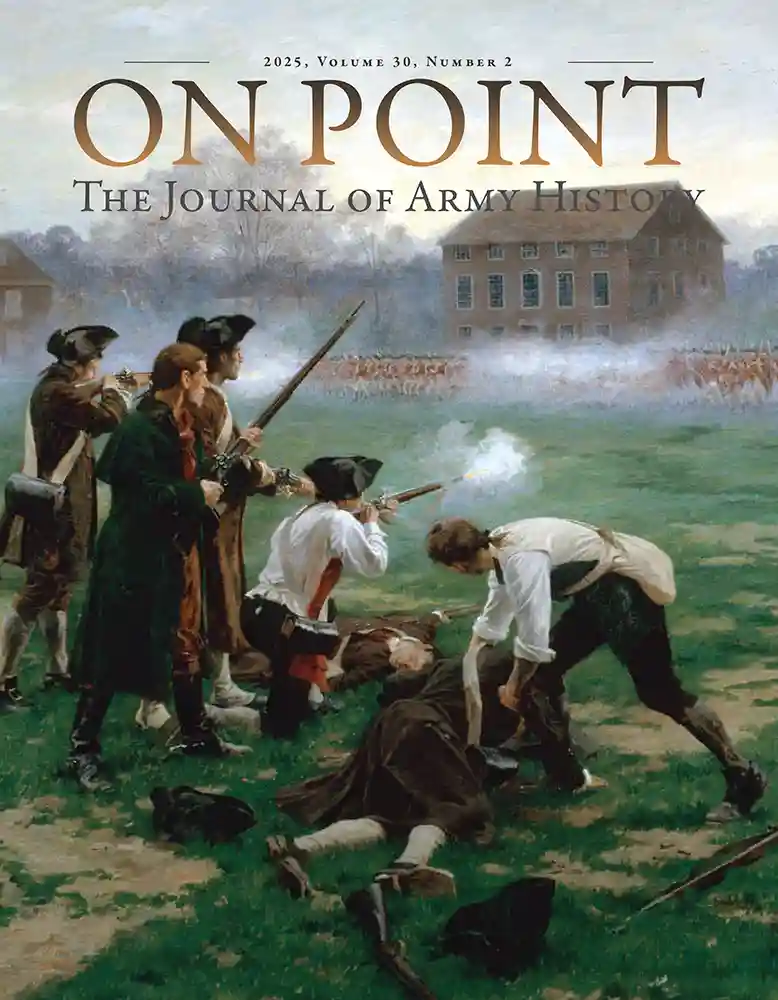

In this 1910 painting by William Barnes Wollen, militiamen return fire at British troops as several of their comrades lie dead and wounded on Lexington Green early on the morning of 19 April 1775. (The Battle of Lexington, National Army Museum, United Kingdom)
Discover the stories of our nation’s first veterans in this Special Exhibition Gallery at the National Museum of the United States Army.
Brigadier General Stephen Watts Kearny’s march from Fort Leavenworth in present-day Kansas to San Diego, California, during the Mexican War remains as one of the greatest feats in American military history.
Following the destruction of British East India Company tea in Boston Harbor in December 1773, and the heavy-handed response of the British government with the imposition of the Coercive Acts in the summer of 1774, tensions between the American colonies and the Mother Country grew steadily worse.
While American forces demonstrated the will to stand up to the British Army in early battles such as Lexington, Concord, Bunker Hill, and others, they needed a steady supply of weapons to win the war. In stepped France, Great Britain’s longtime rival, which supplied the Continental Army with various types of ordnance and supplies, including tens of thousands of Charleville Muskets.
On 7 June 2025, The National Museum of the U.S. Army opened Call to Arms: The Soldier and the Revolutionary War, a landmark exhibit on the conflict that led to the birth of the United States. Running through June 2027, the exhibit features dozens of Revolutionary War-era artifacts from the U.S. Army’s collections, as well as those of various museums, some of which have never been publicly displayed.
The 175th Infantry is the oldest continuously operating military unit in Maryland, and the seventh oldest regiment in the U.S. Army.
Take a journey through this issue’s Army Almanac, featuring thirty-plus important dates in U.S. Army history.
Retired Marine Corps Lt. Col. Robert J. Darling was a White House Airlift Operations Officer who, during the terrorist attack on America on Sept. 11, 2001, responded to the underground White House Bunker Complex. There, he became the liaison between the Vice President, National Security Advisor, and The White House Situation Room.